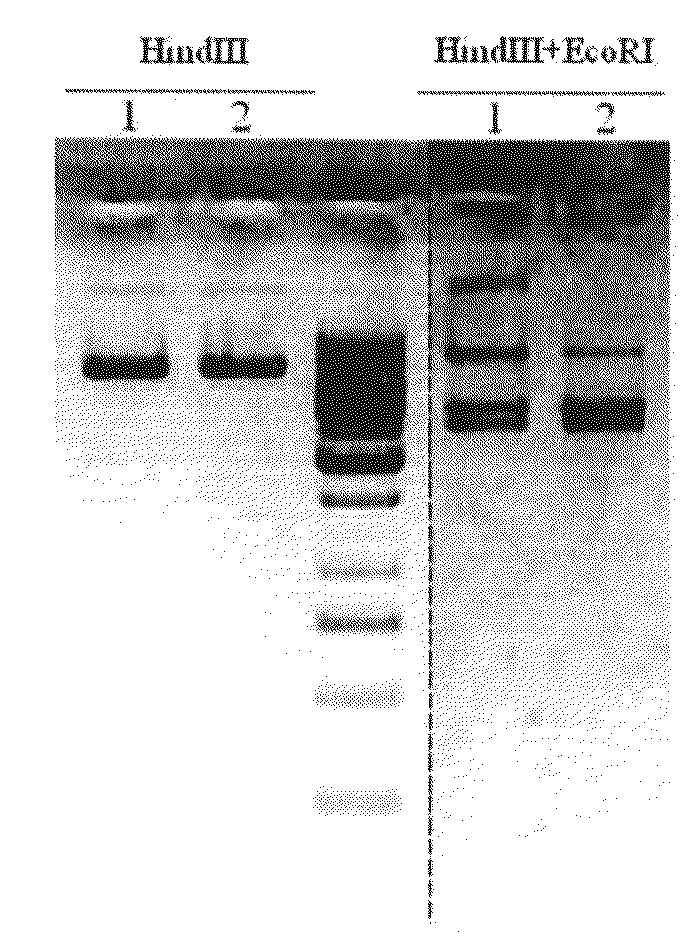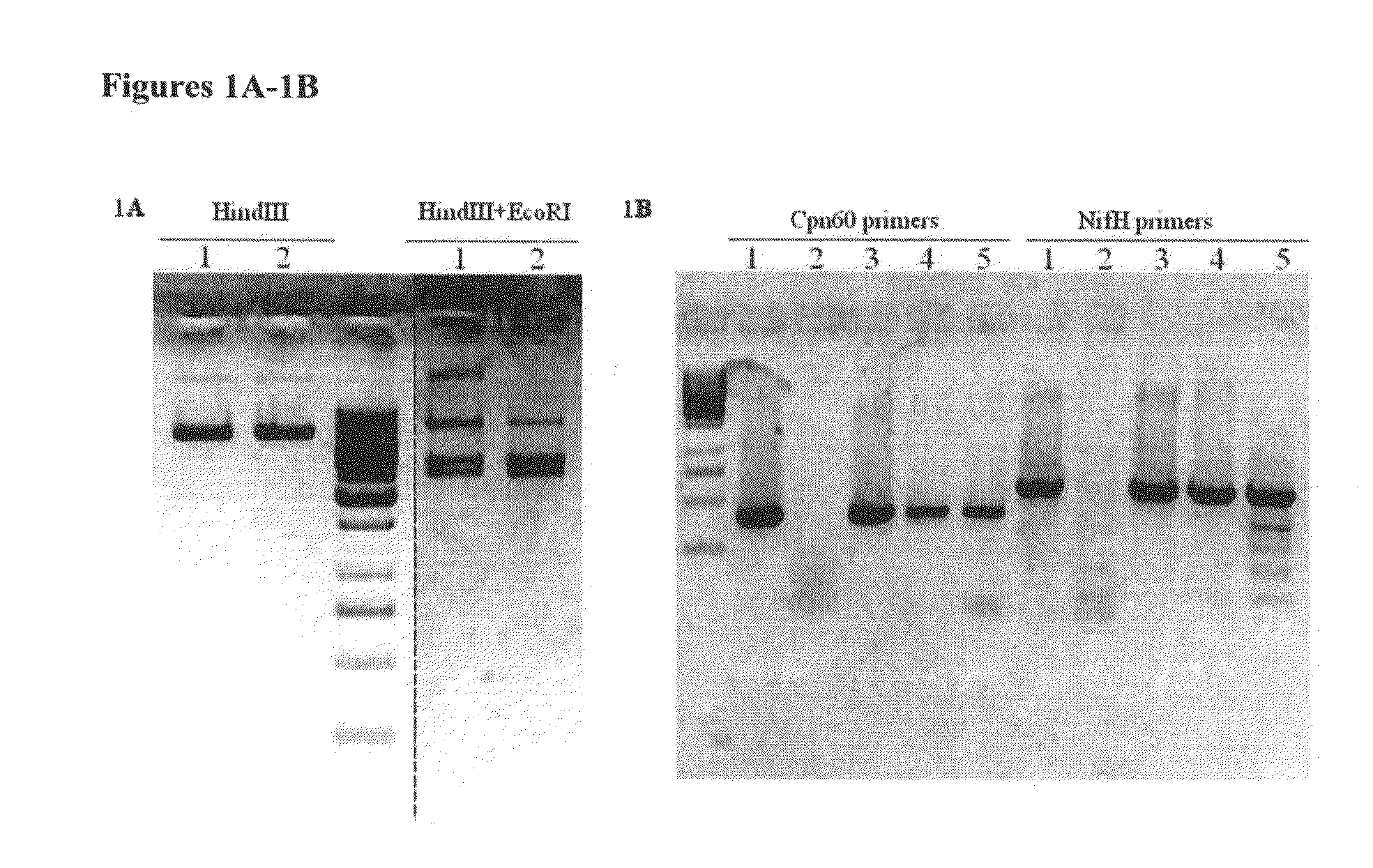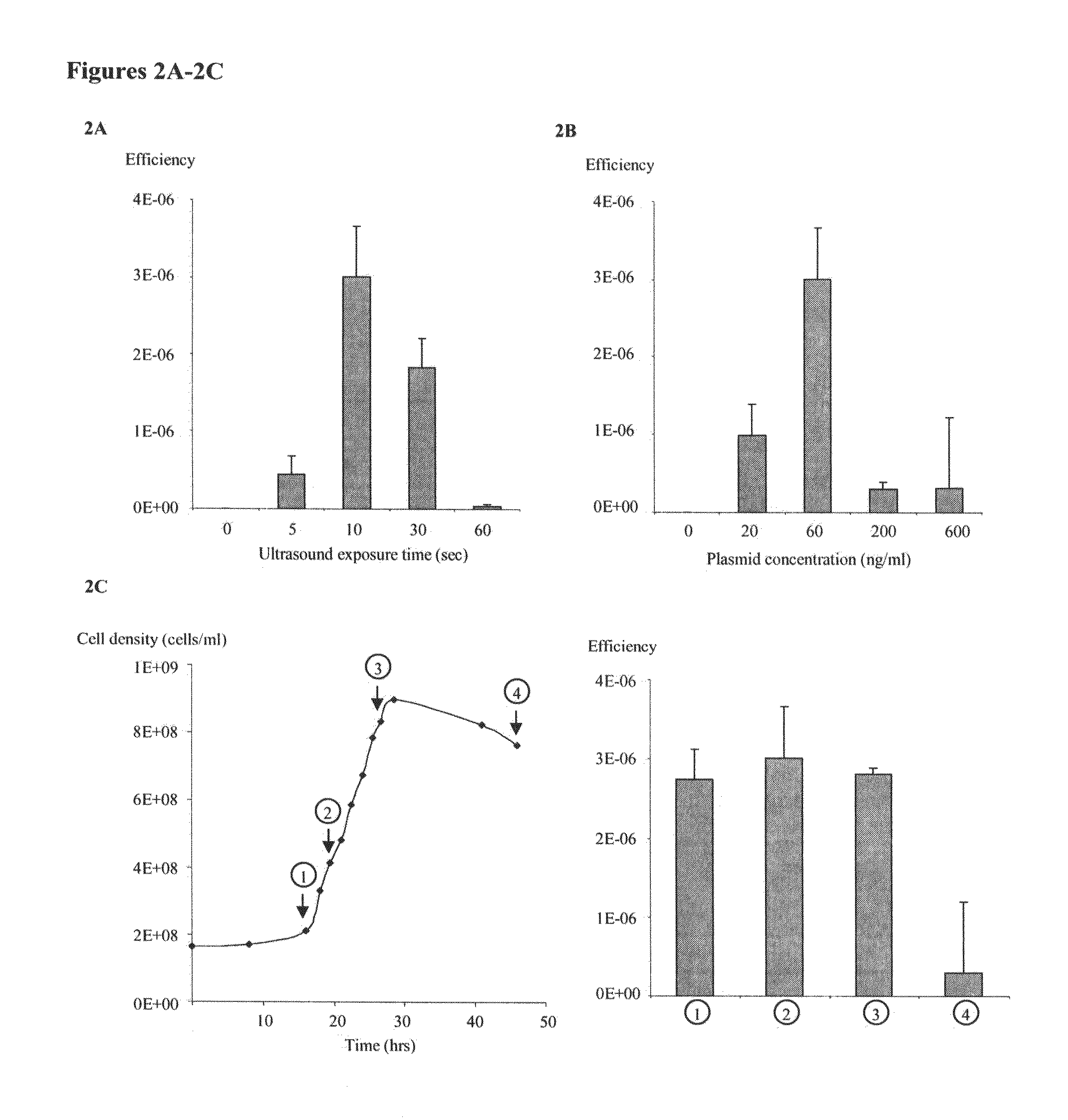Transformation of gram positive bacteria by sonoporation
a technology sonoporation, which is applied in the field of gram positive bacteria transformation, can solve the problems of preventing gene expression and viral re-infection, limiting the range of applicable species of chemically facilitated methods, and limiting the range of applicable species
- Summary
- Abstract
- Description
- Claims
- Application Information
AI Technical Summary
Benefits of technology
Problems solved by technology
Method used
Image
Examples
example 1
Establishing Low Frequency Sonoporation in Mesophilic Clostridia
[0042]Sonoporation using low frequency 40 kHz ultrasound was tested in three mesophilic Clostridia: C. phytofermentans, C. celerecrescens and C. cellobioparum. These bacteria have a potential for use in consolidated bioprocessing (CBP), which combines cellulose hydrolysis and fermentation in a single process, but had not been transformable prior to this study. All of the Clostridia strains were grown in CSM2 medium having the following composition: 0.5 g NaHCO3, 0.25 g Na2S*9H2O, 10 mg FeSO4*6H2O, 1 g Cysteine HCl, 2.75 g base MOPS, 1 g K2HPO4, 1.3 g (NH4)2SO4, 0.5 g KH2PO4, 0.5 g MgCl2*6H2O, 0.1 g CaCl2*2H2O, 5 g Cellobiose, 5 g Yeast Extract, 1000× ATCC Vitamins, and 1000× ATCC Minerals, dissolved in water to 1 L.
[0043]0.5 ml cell cultures grown to late log phase (having a cell density of 108-109 cells / ml) were mixed with 0.5 μg plasmid pSOS95Del, a plasmid described by Tummala (2003)14, in flat-bottom glass vials. T...
example 2
The Effects of Duration of Sonoporation, Plasmid Concentration and Cell Density or Growth Status on Transformation Efficiency
[0046]Experiments were carried out in C. phytofermentans to evaluate factors that influence transformation efficiency. DNA transformation has the highest efficiency of ˜2,000 CFU / μg DNA when exposed to ultrasound for 10 seconds (FIG. 2A) and at plasmid concentration of 60 ng / ml (FIG. 2B). Extended ultrasound exposure to 60 seconds significantly reduced the efficiency. This observation is consistent with a similar study in the gram negative bacterium Pseudomonas putida (Song, 2007)7, which suggested that prolonged ultrasound treatment could damage both plasmid and bacterial cells and thus impair transformation efficiency. In addition, the physiological status of bacteria host impacted DNA transformation, as the efficiencies were high when the bacterial population underwent exponential growth, but dropped dramatically after cells entered stationary phase (FIG. 2...
example 3
Establishing Sonoporation in Thermophilic Bacteria
[0047]Thermophilic bacteria of bioenergy relevance, including Clostridium thermocellum, Anaerocellum thermophilum and a novel environmental isolate from Yellow Stone National Park Caldicellulosiruptor OB47, were subjected to sonoporation. Plasmid pHV33 (Tsoi et al, 1987)15 carrying a thermostable cat gene that confers resistance to chloramphenicol was used in these experiments.
[0048]A similar protocol to Example 1 was applied. In brief, cells were grown to late logarithmic phase. 0.2 ml cell cultures were mixed with 1.5 μg plasmid in flat-bottom glass vials. The vials were immersed in a standard 40 kHz ultrasonic cleaner Branson 200 apparatus, which contained 0.2 liter of MiliQ water, and ultrasound treatment was applied for 10 seconds. Afterwards, 0.2 ml cell cultures with plasmids were injected into anaerobic culture tubes containing 10 ml growth medium and were kept at 60° C. for about one doubling time before chloramphenicol and ...
PUM
 Login to View More
Login to View More Abstract
Description
Claims
Application Information
 Login to View More
Login to View More - R&D
- Intellectual Property
- Life Sciences
- Materials
- Tech Scout
- Unparalleled Data Quality
- Higher Quality Content
- 60% Fewer Hallucinations
Browse by: Latest US Patents, China's latest patents, Technical Efficacy Thesaurus, Application Domain, Technology Topic, Popular Technical Reports.
© 2025 PatSnap. All rights reserved.Legal|Privacy policy|Modern Slavery Act Transparency Statement|Sitemap|About US| Contact US: help@patsnap.com



